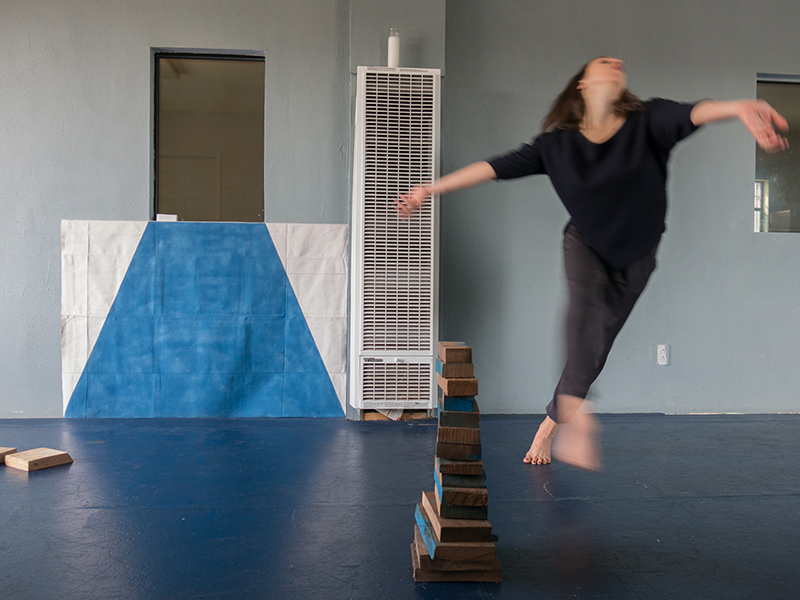Faculty Q&A with Alison D’Amato
September 14, 2016

USC Kaufman faculty member Alison D'Amato
Faculty member Alison D’Amato has an extensive background in dance research and philosophy. She has focused her studies on analyzing dance notations and their role in choreography design and interpretation.
D’Amato joined the USC Kaufman School of Dance this fall to teach theoretical courses to dance major and non-major students.
What led you to dance research?
I’ve been dancing all my life, training in jazz, ballet, tap, modern and contemporary dance. In college, I was a philosophy major and, at the time, I wasn’t interested in combining my work in the dance studio with what I was learning in philosophy.
When I started my M.A. at the Trinity Laban Conservatoire in England, I began to think about dance in the context of the philosophical ideas that I had explored as an undergrad. That was the moment when I realized that I wanted to bridge those two worlds. My scholarship started to support my dance, to the point that I could not envision the choreographic work that I was doing without reading and writing, and vice versa.
When I came back to the United States, I danced for a while, but I realized that I missed the scholarship. I decided to go back to academia and pursue my Ph.D. That’s when I really got serious about dance studies research.
How has this field progressed?
Dance studies have had a robust presence in the academy since the mid-1980s. At USC Kaufman, I work with my students on understanding the key intellectual precursors that led dance studies to become an academic field.
Research in dance is very diverse. Some people analyze dance history, others do dance ethnographies and others develop aesthetic theories … I want students to understand the diversity of the field in terms of scholarship, as well as practice.
The concept of “choreographic scores” is widely discussed in your work. What are they about?
Just like in music notation, prior to the mid-20th century, most systems of dance notation tried to record choreographic moves faithfully, in order to preserve and recreate the choreographer’s intention in the most approximate possible way.
My research focuses on the post mid-century dance score, when we began to see open scores that didn’t intend to be faithful to the creator’s original idea. This type of open scores allowed multiple different interpretations and even mutation of dance piece over time.
William Forsythe’s online projects Synchronous Objects and Motion Bank are very significant for this research. Forsythe uses scores to examine choreographic thinking, and allows dance to exist outside the body as a digital representation. He uses the score for a very different purpose than the one we traditionally think of.
How do you combine your research with your choreography?
In my own choreographic practice, I develop scores that are designed for dancers to interpret in their own way. For instance, when I teach choreography, I say the instructions verbally and get a variety of responses from dancers.
How do you involve score analysis in your classes at USC Kaufman?
In my “International and Historical Perspectives on Dance” class, we’ll talk about The Rite of Spring, which is a ballet choreography designed by Vaslav Nijinsky. We’ll discuss the struggle to recreate that particular piece, that’s based on Nijinsky’s personal system of notation, and review how other choreographers recreated the piece in forms that may look completely different.
In “Dance as an Art Form,” we’ll also review the shift from notation that’s intended to recreate, towards a more opened score that allows free interpretation.
Why is research important for a professional dancer’s career?
To be a dancer is not just about memorizing steps or having a very solid grasp of what has come before in the field. Students can take that knowledge to another dimension through their writing, their own choreography or their interpretation of other people’s choreographies.
A research discipline gives you the drive to try things that are unknown to you. Research is about putting an inquiry into motion, even if you don’t know how it’s going to turn out.